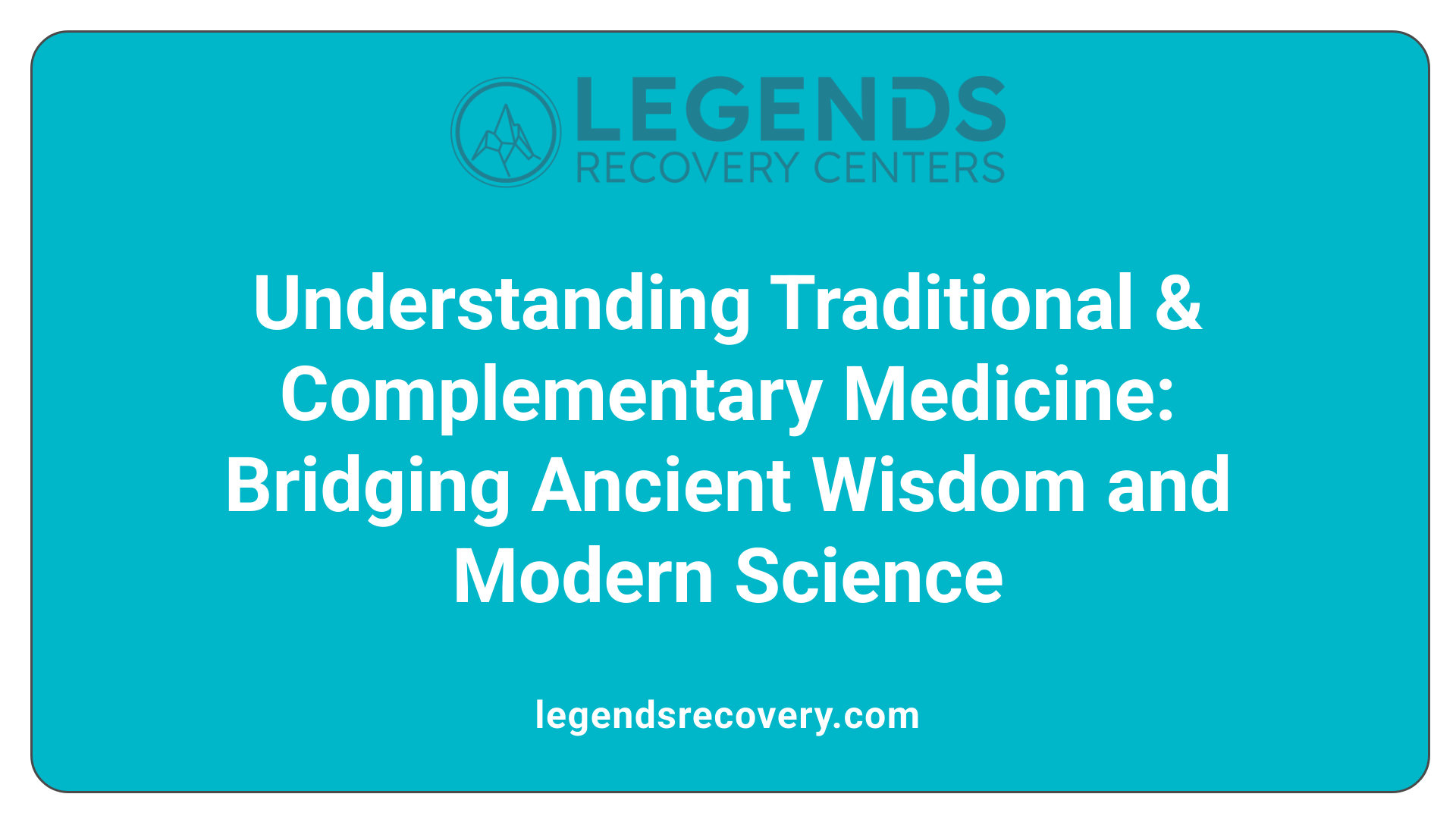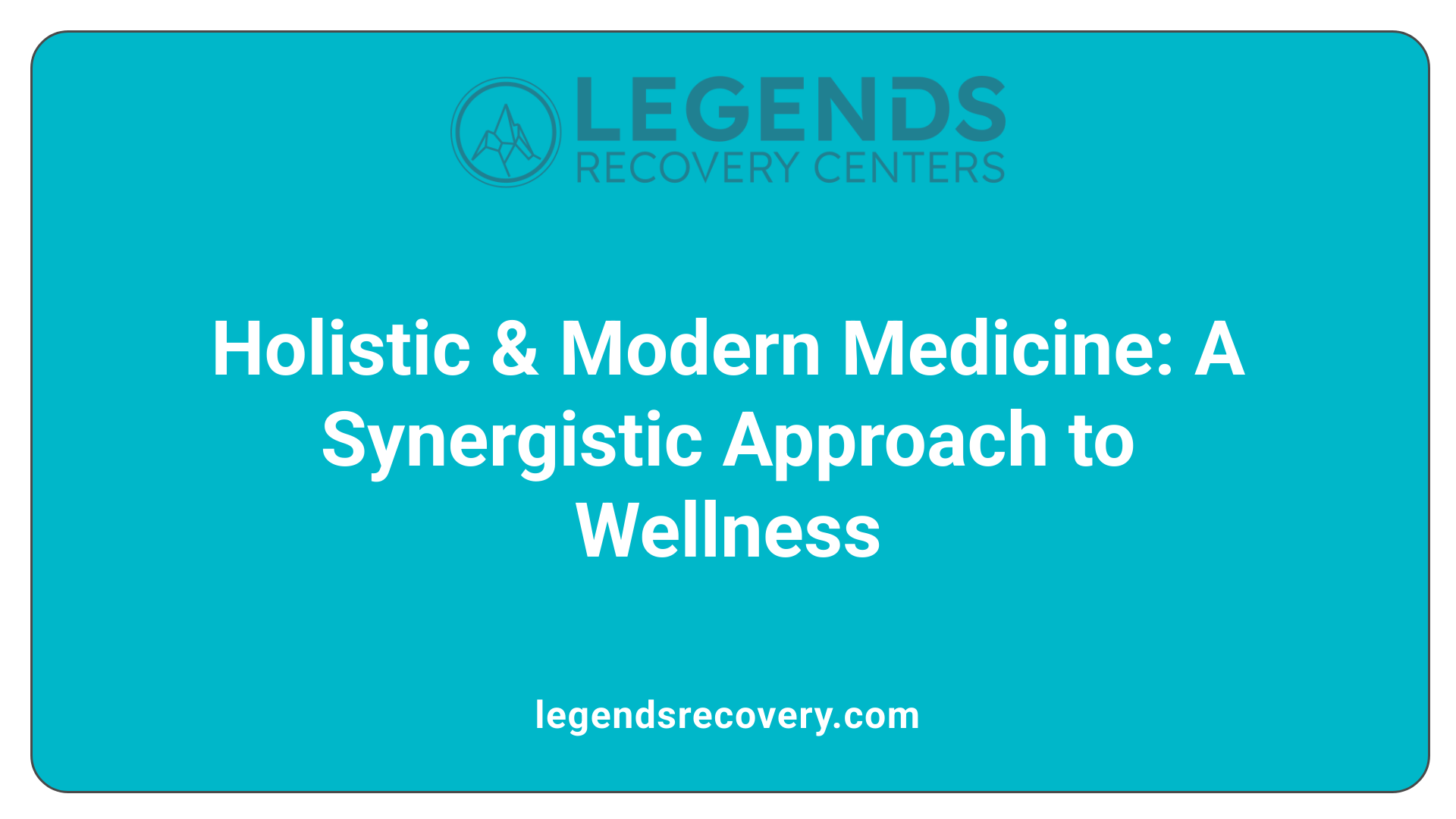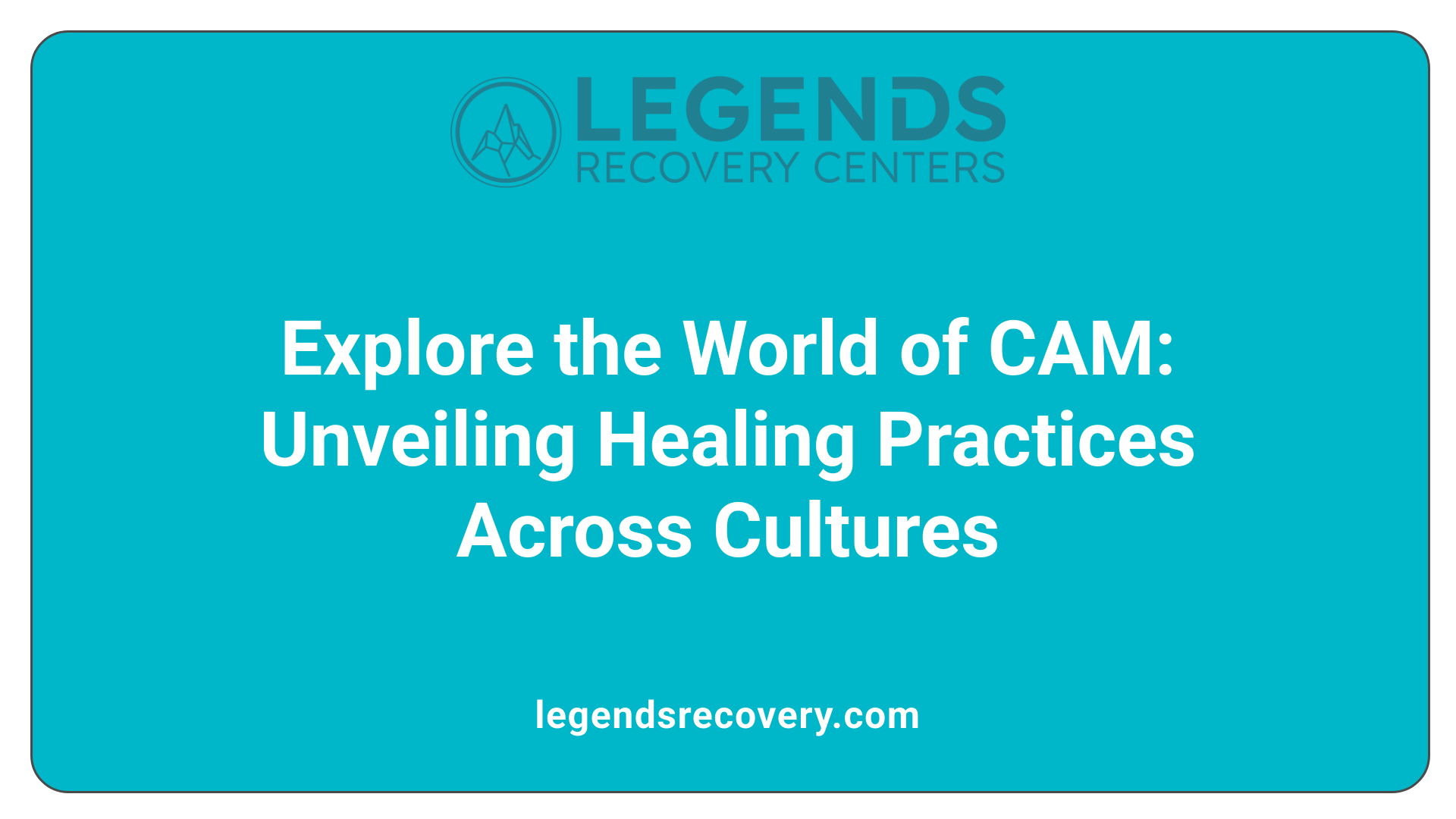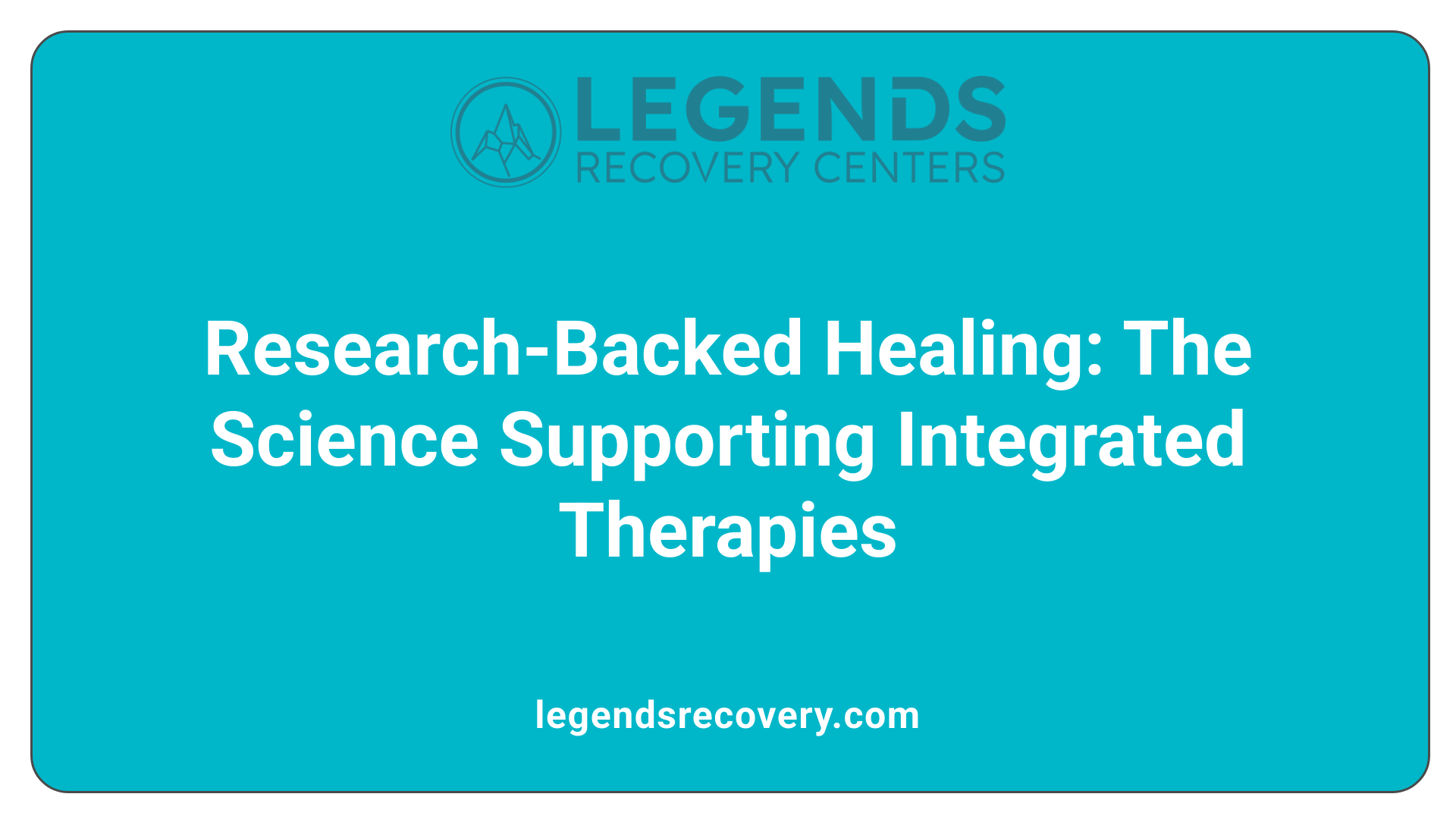Harnessing the Power of Holistic Healthcare

In an era where personalized, patient-centered care is paramount, integrating traditional and alternative therapies with conventional medicine offers a promising pathway to improved health outcomes. This comprehensive approach, often referred to as integrative medicine, emphasizes treating the whole person—mind, body, and spirit—by combining evidence-based practices from diverse medical traditions. As global health systems recognize the value of these approaches, understanding their benefits, scope, and implementation can empower practitioners and patients to achieve optimal wellness.

Traditional medicine encompasses a broad range of practices, skills, knowledge, and philosophies developed and sustained over centuries within specific cultural contexts. It emphasizes natural remedies, holistic approaches, and the restoration of balance among mind, body, and environment. This includes herbal medicine, acupuncture, chiropractic care, massage therapy, Tai Chi, yoga, and other body movement therapies, as well as dietary and energy-based treatments like Reiki and Qigong.
Traditional medicine is deeply embedded in the cultural identity and collective health practices of many communities worldwide. It often reflects religious, spiritual, and community beliefs, making it integral to local healthcare practices, especially in low- and middle-income countries. Despite its long history, the scientific validation of many traditional therapies is often limited, and ongoing research aims to delineate their safety and efficacy.
The World Health Organization recognizes the value of traditional medicine, actively promoting its integration into contemporary health systems to improve access, cultural relevance, and holistic care. The WHO's Global Traditional Medicine Strategy 2025–2034 emphasizes developing evidence-based, culturally respectful, and sustainable frameworks for traditional medicine use.
Complementary medicine refers to healthcare practices not traditionally part of mainstream medicine, but which can support and enhance health and well-being when used alongside conventional treatments. These practices include herbal remedies, acupuncture, biofeedback, hypnotherapy, and massage therapy, all of which have shown varying degrees of scientific support.
The goal of complementary medicine is to address health holistically, focusing on disease prevention, symptom management, and improving overall quality of life. For example, acupuncture has been demonstrated to significantly reduce pain and alleviate anxiety, while herbal medicine remains vital for a substantial portion of the global population relying on plant-based remedies.
When integrated effectively, complementary practices can lead to improved patient satisfaction, fewer side effects, and potentially reduced reliance on pharmaceuticals. Moreover, they can help manage complex conditions such as chronic pain, mental health disorders, and side effects from conventional therapies.
Patients are motivated by a variety of factors when choosing complementary and alternative therapies. Many are dissatisfied with traditional care, seeking a more personalized, holistic approach that considers emotional, mental, and spiritual dimensions.
Perceptions of CAM as natural, safe, and less toxic encourage its use for symptom relief and overall well-being. Social influences, cultural beliefs, and a desire for active participation in health decisions also drive this choice. Feelings of being overlooked or misunderstood by conventional providers can lead patients to explore CAM as a more attentive and holistic alternative.
Ultimately, individual circumstances, cultural values, and personal experiences shape these choices, making CAM an integral part of many people's health strategies.
Traditional medicine can enhance modern healthcare through a holistic, patient-centered approach that targets not only physical symptoms but also mental and spiritual health. For instance, integrating acupuncture, herbal medicine, meditation, and body therapies into conventional care can improve overall outcomes.
Evidence-based traditional therapies support natural healing, reduce side effects, and promote patient comfort and empowerment. For example, combining medication with yoga or mindfulness-based interventions has shown benefits in managing depression and anxiety. Herbal remedies can help alleviate symptoms of chronic illnesses or reduce side effects of mainstream treatments.
Furthermore, integrating traditional practices fosters culturally sensitive healthcare, improving accessibility and adherence, especially in diverse global populations. WHO recognizes this synergy through strategies that aim to incorporate safe, effective traditional medicine into national health systems.
Integrating traditional and complementary systems with modern medicine enhances health management by offering a comprehensive, personalized approach. It addresses underlying causes of illness, emphasizing prevention, lifestyle modification, and well-being.
Such integration involves collaboration among healthcare practitioners, regulatory oversight, and ongoing research to ensure safety and efficacy. It also requires educating providers and patients about the benefits and limitations of various therapies.
In the future, expanded research and policy efforts will further solidify the role of traditional medicine and CAM in global health, contributing to more resilient, equitable, and culturally competent healthcare systems.
| Aspect | Traditional Medicine | Complementary Medicine | Integration Potential | Additional Details |
|---|---|---|---|---|
| Definition | Practices, skills, and knowledge from cultural contexts; natural remedies | Non-mainstream practices used alongside conventional medicine | Combining both to improve health outcomes | Supported by WHO and global health strategies |
| Major Modalities | Herbal medicine, acupuncture, chiropractic, massage, Tai Chi, yoga | Herbal remedies, acupuncture, biofeedback, hypnotherapy | Evidence-supported practices like acupuncture, yoga, meditation | Focus on holistic, personalized, and less invasive treatments |
| Patient Motivation | Desire for holistic care, safety, self-reliance | Symptom management, wellness, minimal side effects | Enhances disease management, especially for chronic conditions | Addresses physical, mental, and spiritual health |
| Benefits | Natural healing, stress reduction, empowerment | Symptom relief, quality of life, fewer side effects | Promotes cultural relevance, accessibility, and sustainability | Improves healthcare system resilience and patient satisfaction |
| Challenges | Scientific validation, safety, regulation | Safety, efficacy, integration standards | Need for research and provider education | Ensures safe, effective, and ethical practice |

Integrating holistic approaches with conventional medical treatments creates a comprehensive healthcare model that addresses all facets of a person's well-being. This synergy allows for tailored care that considers physical health, mental clarity, emotional stability, and spiritual balance. For example, therapies like acupuncture, herbal medicine, meditation, and yoga are increasingly incorporated into mainstream healthcare because they can target underlying health issues rather than only managing symptoms.
Research supports that this combined approach can improve health outcomes in chronic conditions such as autoimmune diseases, hypertension, and mental health issues. It emphasizes prevention and promotes healthier lifestyles by fostering resilience and reducing stress. Patients often experience greater satisfaction and engagement in their healing process when they can actively participate through holistic practices.
This collaborative treatment paradigm enhances overall well-being, making healthcare more effective and patient-centered. It promotes long-term health and reduces dependence on pharmaceuticals, leading to a more sustainable healthcare system.
Complementary and alternative medicine (CAM) includes a broad spectrum of practices aimed at improving health and well-being beyond conventional medicine. Some of the most common modalities include:
| CAM Modality | Benefits Offered | Additional Details |
|---|---|---|
| Acupuncture | Pain relief, reduction of inflammation, stress alleviation | Stimulates energy flow through specific points |
| Herbal Medicine | Management of various ailments using plant extracts | Used globally for conditions like sleep disorders, depression |
| Chiropractic Care | Alleviates musculoskeletal pain, enhances nervous function | Involves spinal manipulation to improve mobility |
| Cupping | Reduces pain and promotes blood flow | Uses suction cups on skin, often for musculoskeletal issues |
| Reiki | Energy healing for relaxation and stress | Focuses on energy flow to restore balance |
| Ayurveda | Holistic health focusing on diet, herbs, and lifestyle | Originates from India, emphasizes balance of bodily energies |
These practices often serve to complement standard treatments, amplifying their effects and helping manage symptoms like pain, stress, and anxiety.
The use of CAM therapies alongside conventional medicine can significantly enhance treatment efficacy and patient satisfaction. Patients report experiencing fewer side effects from their treatments and feeling more empowered in their healthcare journey.
Combining therapies like acupuncture and yoga with medication has shown to improve mental health outcomes, including reductions in depression and anxiety. For instance, yoga combined with medication benefits individuals suffering from depression by improving mood and physical health.
Moreover, holistic approaches foster resilience by addressing not just biological factors but also behavioral, social, and spiritual dimensions of health. This comprehensive care can lead to better management of chronic diseases and enhance overall life quality.
The integration of traditional practices such as herbal medicine and energy therapies into mainstream healthcare frameworks is supported by organizations like the WHO, which advocates for evidence-based, culturally respectful approaches. Such integration can improve healthcare accessibility, lower costs, and reduce reliance on pharmaceuticals, especially in low- and middle-income countries.
In summary, blending holistic and conventional treatments results in a more rounded, effective, and patient-centric healthcare system—one that promotes wellness, supports recovery, and sustains long-term health benefits.

Complementary and alternative medicine (CAM) includes a broad spectrum of health practices outside conventional medicine. These therapies are often aimed at enhancing health, managing chronic conditions, or reducing symptoms associated with various health issues.
Some well-known types of CAM are acupuncture, herbal medicine, chiropractic care, cupping, reiki, and traditional systems like Ayurveda.
Categories of CAM Therapies#### Acupuncture and Energy-Based Therapies Acupuncture involves inserting fine needles into specific points on the body to relieve pain and promote healing. Supportive research indicates significant benefits for pain reduction, including back pain, osteoarthritis, and even anxiety. Reiki and other energy therapies work on the premise of balancing the body's energy fields, offering relaxation and stress relief.
Herbal Medicine and Botanical Therapies Herbal medicine combines natural plant-based remedies used globally by about 80% of the world’s population. These remedies target various health conditions, such as heart problems, skin rashes, or fatigue. Their natural origin often results in fewer side effects compared to pharmaceuticals.
Manipulative and Body-Based Practices Chiropractic care, massage therapy, and body movement practices like Tai Chi and yoga help improve physical function, reduce pain, and enhance mental health. They are particularly popular for musculoskeletal issues but also contribute to stress management.
Mind-Body Techniques Practices such as meditation, biofeedback, hypnosis, art therapy, and guided imagery focus on mental and emotional well-being. They help reduce stress, anxiety, and depression, improving overall quality of life.
Acupuncture has demonstrated effectiveness in pain management, sleep disorders, anxiety, and infertility issues. Herbal medicine provides plant-based solutions for conditions such as premenstrual syndrome, obesity, and chronic fatigue. Chiropractic care is commonly used to treat spinal pain and improve nervous system function. Yoga and Tai Chi promote flexibility, balance, and mental clarity, aiding in managing stress and chronic pain. Reiki and holistic therapies strengthen emotional resilience and relaxation.
The combination of traditional medicine and CAM practices results in comprehensive, patient-centered care that addresses multiple health dimensions—physical, emotional, and spiritual. This integration often leads to improved health outcomes, higher patient satisfaction, and reduced reliance on medications.
It supports the management of chronic diseases, alleviates treatment side effects in cancer care, and fosters holistic wellness by focusing on prevention and lifestyle adjustments.
Furthermore, integrating traditional medicine into mainstream healthcare systems aligns with World Health Organization (WHO) strategies, promoting safe, effective, and culturally respectful practices.
| Benefit | Description | Additional Notes |
|---|---|---|
| Improved Patient Outcomes | Combines scientific evidence with holistic approaches for better health management | Especially effective for chronic and mental health conditions |
| Enhanced Patient Satisfaction | Provides options aligned with cultural beliefs and personal preferences | Leads to higher engagement in treatment plans |
| Cost-Effectiveness | Minimally invasive approaches and prevention strategies reduce healthcare expenses | Can decrease hospitalization and medication reliance |
| Safe and Evidence-Based Practice | When properly regulated, CAM therapies are generally safe and effective | Promotes collaboration among healthcare providers |
| Increased Accessibility and Cultural Relevance | Acknowledges diverse cultural health beliefs | Facilitates broader healthcare reach, especially in LMICs |
In conclusion, integrating various CAM therapies with conventional healthcare creates a holistic approach that emphasizes personalized care, safety, and efficacy. It supports a shift toward health management that considers the physical, emotional, and spiritual aspects of individuals, fostering long-term wellness and resilience.
Integrative medicine is a comprehensive approach that combines proven conventional treatments with various complementary and alternative therapies to enhance mental health and overall wellness. This approach goes beyond treating symptoms to address the root causes of emotional distress, considering a wide range of factors such as biochemical imbalances, spiritual needs, and lifestyle habits.
By embracing personalized, whole-person care, integrative medicine actively involves patients in their healing journey. It utilizes strategies like nutritional supplements, mindfulness practices, herbal remedies, and lifestyle adjustments such as improved sleep and regular exercise.
This blend of diverse modalities aims to improve treatment effectiveness, reduce dependence on medications, and encourage proactive prevention. The ultimate goal is to create a balanced, evidence-based framework that supports mental health by promoting emotional resilience, managing stress, and fostering emotional stability.
Overall, integrative medicine fosters a holistic, patient-centered approach that blends modern science with traditional healing practices. Its focus on treating the entire person, including emotional, spiritual, and physical factors, makes it a powerful tool for enhancing mental well-being.
Implementing integrated therapies can significantly boost patient outcomes across various health domains. By addressing the emotional, physical, and spiritual dimensions of health, these therapies improve quality of life and patient satisfaction.
Evidence from research shows that such approaches can lead to meaningful, moderate improvements in physical health, mental health, and emotional resilience. For example, techniques like acupuncture, massage therapy, meditation, and music therapy help reduce stress, alleviate pain, and foster relaxation—elements vital for patients with chronic illnesses or in palliative care.
Moreover, incorporating integrative medicine into healthcare systems can promote more sustainable, cost-effective care. By emphasizing prevention, early intervention, and minimally invasive therapies, healthcare systems can reduce reliance on expensive pharmaceuticals and hospitalizations.
To realize these benefits, successful integration depends on education for healthcare providers, leadership support, and adapting organizational culture to include holistic practices. Overcoming barriers such as limited evidence perception and resource constraints is essential.
In summary, integrated therapies not only improve individual health outcomes but also enhance healthcare system resilience by promoting comprehensive, patient-centered, and cost-effective care.

The integration of traditional, complementary, and alternative medicine (T&CAM) with conventional healthcare is increasingly backed by scientific research. Numerous studies and systematic reviews have demonstrated that many therapies, such as acupuncture, herbal medicine, chiropractic care, yoga, and meditation, are safe and effective when used appropriately within an evidence-based framework.
For example, research from the National Center for Complementary and Integrative Health highlights that acupuncture can significantly reduce pain, anxiety, and sleep disturbances. Herbal medicine, a cornerstone in global healthcare—used by over 80% of the world's population—has shown benefits in managing heart problems, skin conditions, and chronic fatigue. Similarly, therapies like biofeedback and hypnotherapy have proven helpful in mental health management.
International health authorities, including the World Health Organization (WHO), actively promote the scientific assessment of traditional and complementary practices. The WHO's Global Traditional Medicine Strategy 2025–2034 emphasizes evidence-based integration, focusing on safety, efficacy, and cultural respect.
Numerous clinical trials and meta-analyses provide further validation. For instance, combining yoga with medication has demonstrated improved depression and anxiety outcomes, while herbal remedies have supported symptom relief in autoimmune conditions.
Advancements in research methodologies, such as randomized controlled trials and standardized protocols, continually strengthen the evidence base. As a result, traditional and alternative practices are increasingly incorporated into mainstream medicine, offering holistic treatment options that emphasize patient-centered care.
This growing body of scientific validation supports the view that combining conventional medicine with well-supported CAM therapies can enhance health outcomes, reduce side effects, and promote overall well-being.
Recognizing the potential of traditional medicine, many countries have integrated CAM into their national health policies. Turkey's Ministry of Health, for instance, introduced legislation in 2014 certifying various traditional therapies for clinical use. The WHO actively promotes the integration of safe and effective traditional practices through its strategies and global summits.
The World Health Assembly resolution in 2009 endorsed integrating traditional medicine into national health systems, especially in low- and middle-income countries where access to conventional healthcare may be limited. By doing so, it aims to improve healthcare equity, improve chronic disease management, and strengthen health system resilience.
Furthermore, collaborative models such as interdisciplinary clinics, where practitioners of biomedicine and CAM work together, are promoted globally. These models encourage mutual understanding, standardization, and patient safety.
Overall, these policies are designed to foster safe, effective, and culturally respectful integration of traditional practices, enhancing healthcare delivery worldwide.
| Aspect | Description | Additional Details |
|---|---|---|
| Scientific validation | Strong evidence supports many CAM therapies | Includes systematic reviews, clinical trials |
| Global health policies | Encourage integration for better health outcomes | WHO strategy, national legislation |
| Treatment examples | Acupuncture, herbal medicine, yoga, chiropractic | Validated through research, recommended in guidelines |
| Benefits of integration | Improves care, reduces medication reliance | Holistic, patient-centered approaches |
| Challenges | Need for regulation, standardization, research | Addressing safety, efficacy concerns |
In summary, the accumulating scientific data combined with proactive health policies globally bolster the acceptance and safe implementation of integrated health approaches. Future research and collaboration will continue to refine these practices, making holistic, evidence-based care accessible to diverse populations.

Traditional medicine can play a vital role in enhancing modern health care by offering approaches that are holistic, personalized, and culturally sensitive. Integrating practices such as acupuncture, herbal medicine, meditation, hypnotherapy, and body therapies into mainstream medicine allows a comprehensive approach that addresses physical, mental, and spiritual health.
Evidence-based traditional treatments, supported by clinical research and international health guidelines, can improve symptom management, foster natural healing, and enhance overall well-being. For example, acupuncture has been shown to reduce pain and anxiety, while herbal remedies are widely used for chronic conditions like heart issues and skin diseases worldwide.
By respecting cultural beliefs and leveraging traditional insights, healthcare providers can bridge gaps in healthcare access, especially in low- and middle-income countries, thus promoting greater health equity. This integration creates a multidisciplinary model whereby patients receive care tailored to their unique needs and preferences. It fosters a patient-centered environment that combines scientific validation with cultural relevance, ultimately leading to safer, more effective health management.
In summary, combining the strengths of traditional and modern medicine results in more comprehensive, sustainable strategies that improve health outcomes, reduce reliance on pharmaceuticals, and support long-term wellness.
Effective integration of complementary and alternative medicine (CAM) into mainstream healthcare depends on several critical factors. First and foremost is the development of robust regulatory frameworks. These are necessary to ensure the safety, quality, and efficacy of CAM therapies, providing clear standards for practitioners and products.
Next is education and ongoing training for healthcare providers. Medical professionals need to be equipped with evidence-based knowledge of CAM practices and cultural competence to foster trust and proper communication with patients. Educational programs should include clinical research findings, safety protocols, and ethical considerations.
Interprofessional collaboration is also fundamental. Creating models that facilitate coordinated care between conventional medicine practitioners and CAM specialists helps prevent adverse interactions, optimizes treatment plans, and enhances patient safety. Regular communication channels and shared decision-making processes support this collaborative environment.
Policy support from national health authorities and alignment with global strategies, such as the WHO’s traditional medicine initiatives, further bolster integration efforts. Incorporating CAM into national health systems, insurance coverage, and clinical guidelines helps legitimize and sustain these practices.
Finally, continuous research and evaluation are needed to validate therapies, guide best practices, and adapt to emerging evidence. This ensures that CAM integration remains scientifically grounded while respecting cultural contexts. When these factors are in place, CAM can become a valuable partner in delivering safe, effective, and holistic healthcare to diverse populations.
The integration of traditional and alternative therapies into mainstream healthcare systems promotes a more holistic, patient-centered approach that enhances treatment effectiveness, safety, and accessibility. Supported by a growing body of scientific evidence and global health initiatives, such as those from WHO, this approach not only improves individual health outcomes but also fosters sustainable and culturally respectful healthcare models. Through effective regulation, education, and collaboration, healthcare providers can harness the full potential of combined therapies to address diverse health needs, prevent disease, and promote overall wellness. Embracing the synergy of traditional and modern medicine ultimately paves the way for a more resilient, inclusive, and effective healthcare landscape.